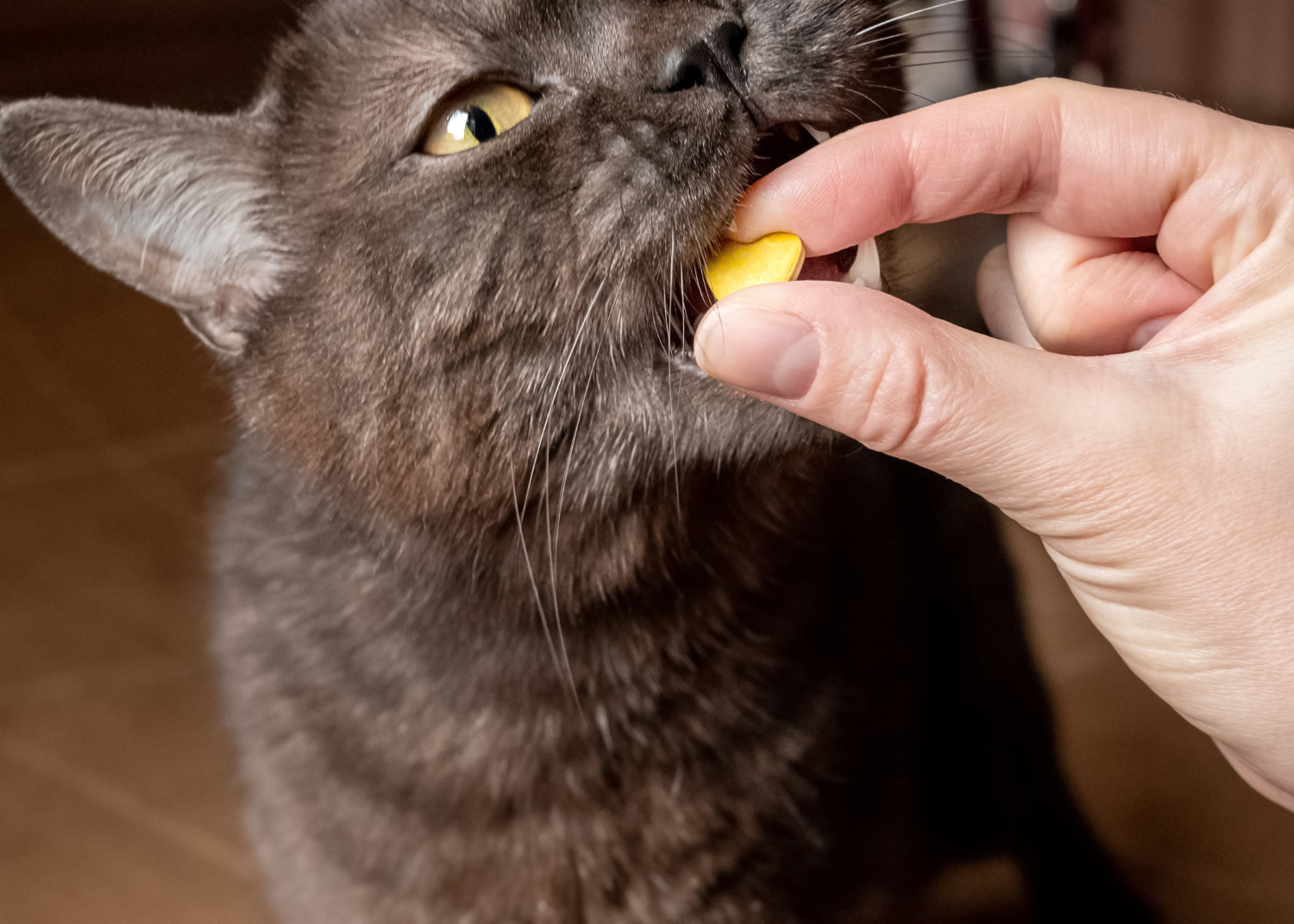Help! My Cat Doesn’t Like Treats
When it comes to cat training, a couple common questions include, “What do I do if my cat doesn’t like treats?” and “How do I train my cat if they aren’t foot motivated?”
While it is certainly easier to train a food-motivated cat, there are some steps you can take to increase your cat’s food drive. It could even be a simple matter of not yet having found a treat your cat is willing to work for.
Here are five tips to help you build your cat’s food motivation and find a reward they will work for:
Disclosure: Cat School may receive commissions from affiliate links included in this article.
1. Feed your cat small scheduled meals throughout the day.
Many cats live with a big bowl of food available at all times. This feeding style decreases food motivation. Why would they work for food when they get it for free?
To build your cat’s desire for food, switch to multiple, small meals throughout the day, and avoid leaving out any food in a bowl for your cat to snack on outside of mealtime.
If you work away from home and can’t schedule small meals, timed feeders can work well. Place in-between meal snacks in food puzzle toys for foraging or use a handful for training.

Small, scheduled meals work best for building food-motivation.
2. Feed your cat a wet food diet or other moisture-rich food.
From a health perspective, wet food is better than dry. Veterinarian and cat advocate Lynn Bahr of DeziRoo.com says that wet food is better for cats because it is lower in calories, higher in protein, and full of moisture.
From a training perspective, feeding moisture-rich meals makes it easier to find suitable training rewards. Once your cat is on a wet food diet, you can reserve the dry food for your training goals.

3. Introduce your cat to new food systematically.
Whether you are introducing treats or a new diet, your cat’s reluctance to try a new food may not be because of preferences but more because of a fear of trying something new. To help your cat learn to feel safe eating unfamiliar food, select a similar choice to their current preferences. For example, if your cat eats chicken-based dry food, buy them a chicken-based moisture-rich food. By keeping the protein consistent, the new food will be easier to introduce.
Start by putting the unfamiliar food beside the everyday meal. At first, the only goal is for the cat to see and sniff the new food but still eat their regular diet.
Over several meals, gradually move the foods together, making sure the new food placement doesn’t change your cat’s desire to eat their current food. As long as your cat’s eating habits don’t change, bring both foods side-by-side and eventually have them slightly overlap.
Once your cat tries the new food, work on changing the ratio of new food to old food. To avoid wasting food during this slow process, I recommend using dehydrated food like the Honest Kitchen or Primal Pet Foods, which will make it easy to introduce tiny amounts of the new food to support a gradual introductory process.
Another advantage of dehydrated food is that you can play with the moisture levels; if your cat only accepts dry food, you can change the texture slowly by gradually introducing water.
4. Aim for variety in your cat’s diet.
Variety in your cat’s meals is a good thing. Feline nutrition expert Ingrid King of The Conscious Cat, recommends rotating diets to provide complete and balanced nutrition.
Variety in training rewards is also important. Rewards will need to vary depending on the skill you are working on. For easy skills and tricks, dry food can work well, but challenging behaviors will require a higher value treat. Harder jobs require bigger pay checks.
My favorite treats to use in training are freeze-dried treats like PureBites because they are healthy (i.e., a single ingredient), easy to break into small pieces, and offer lots of variety. I reserve the lickable treat Churu Purée for the grooming behaviors like nail trims. A recall outside amongst all the distractions earns my cat Temptations.

Churu Purée Treats are excellent for working on nail trims and other grooming and handling skills.
5. Make food delivery fun.
Delivering the treat in a fun way can build your cat’s excitement toward food. If you’ve watched me train, you know I love tossing treats as a fun way to increase my cat’s activity.
I will also place rewards in my favorite food foraging tool, the snuffle mat. You’ve probably seen me hide treats in those small stacking cups that I use to teach fist bump. I also sneak treats inside little toys like the ho-lee roller and will toss them.
Get creative and not only make it fun for your cat to earn rewards but also make it fun for them to FIND the treats.

Reward your cat by dropping treats on a snuffle mat or in other food puzzle toys.
Need more help?
Want to dive deeper into reasons your cat doesn’t like treats? Check out my YouTube video below about the treats I use for Jones:
Further Readings:
Dezi-Roo: Are you feeding your cat correctly? Click here.
Conscious Cat: Rotation Diet for Cats. Click here
Disclaimer: I am an Associate Certified Applied Animal Behaviourist (ACAAB), not a veterinarian or a certified pet nutritionist. This material is not a replacement for comprehensive advice about feeding your cat the most appropriate diet. I cannot be held liable for any choices you make for your cat, so please advocate for your own cat’s health. Consult a veterinarian, preferably integrative or holistic, to oversee the changes you make to your cat’s diet. Never starve your cat to build their food motivation; this is extremely dangerous. Cats that do not eat can develop a deadly condition called hepatic lipidosis.

